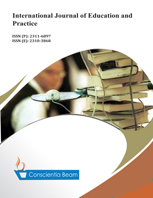Evaluating the Impact of Audio-Visual Media on Learning Outcomes of Drawing Orthographic Projections
DOI:
https://doi.org/10.18488/journal.61.2021.93.613.624Abstract
This study aimed to evaluate learning outcomes of drawing orthographic projections between two groups of students: one group that learnt orthographic projections via audio-visual media and the other group through written material. An experimental design was used to determine the percentage increase in learning outcomes of both methods with factorial values. The samples were students from State Vocational High School (S-VHS) and Private Vocational High School (P-VHS) of Semarang city, Indonesia. The control group and the experimental group had 30 students each. Data analysis was carried out using two-way ANOVA with interaction and descriptive statistics. The results showed that there were significant differences in learning outcomes in orthographic projections. The findings of the study showed the highest increase in learning outcomes was in S-VHS at 61.06% (high category), followed by P-VHS with 52.04% (high category). The P-VHS students who received written teaching materials scored 43.34% (sufficient category), while S-VHS scored 37.86% (enough category). Based on these results, it was concluded that audio-visual media can be used to improve students' competency drawing orthographic projections.





